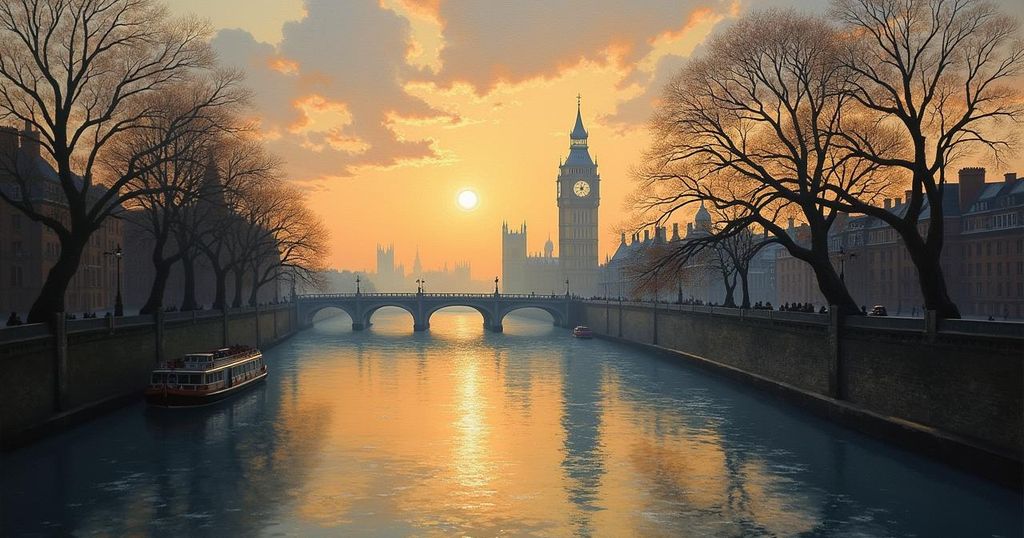A unique exhibition at the Courtauld in London reunites 21 of Monet’s Thames paintings for the first time in 120 years, offering insights into his artistic obsession with the river’s atmospheric conditions from 1899 to 1901. Highlights include a restored Charing Cross Bridge painting once owned by Winston Churchill. The exhibition runs until January 19, 2024.
Monet’s relationship with the Thames River is highlighted in the landmark exhibition “Monet in London: Views of the Thames” at the Courtauld in London, showcasing 21 paintings reunited for the first time since their debut in Paris in 1904. These artworks represent Monet’s frequent visits between 1899-1901 and his fascination with the river’s atmospheric conditions—the ever-shifting fog and lighting. Highlighted works include a significant Charing Cross Bridge painting, previously owned by Winston Churchill, showcasing the artist’s unique interpretation of industrial London. The exhibition runs until January 19 and provides insight into Monet’s dedication to capturing the Thames’ essence through the lens of changing weather.
The exhibition explores Monet’s fascination with London and its iconic river, the Thames, during a period marked by significant atmospheric changes due to fog. Having first visited in 1870, Monet’s allure to the city grew as he repeatedly painted its vistas across various seasons and times of day. His ambition was to represent the dynamic effects of light and weather on his subjects, particularly as industrial London emerged during his time. This exhibition sets a historical context by bringing together a vital series of paintings, allowing viewers to appreciate Monet’s unique perspective and artistry.
The ‘Monet in London: Views of the Thames’ exhibition is a rare opportunity to explore how Monet captured the elusive beauty of the Thames amid a city shrouded in fog. By showcasing these 21 paintings, the Courtauld highlights Monet’s dedication to depicting the changing atmospheres and moods of his chosen landscapes, offering insights into his artistic process and the historical context of his work. This collection promises to deepen the appreciation of Monet’s legacy and his exploration of light and environment.
Original Source: news.artnet.com







